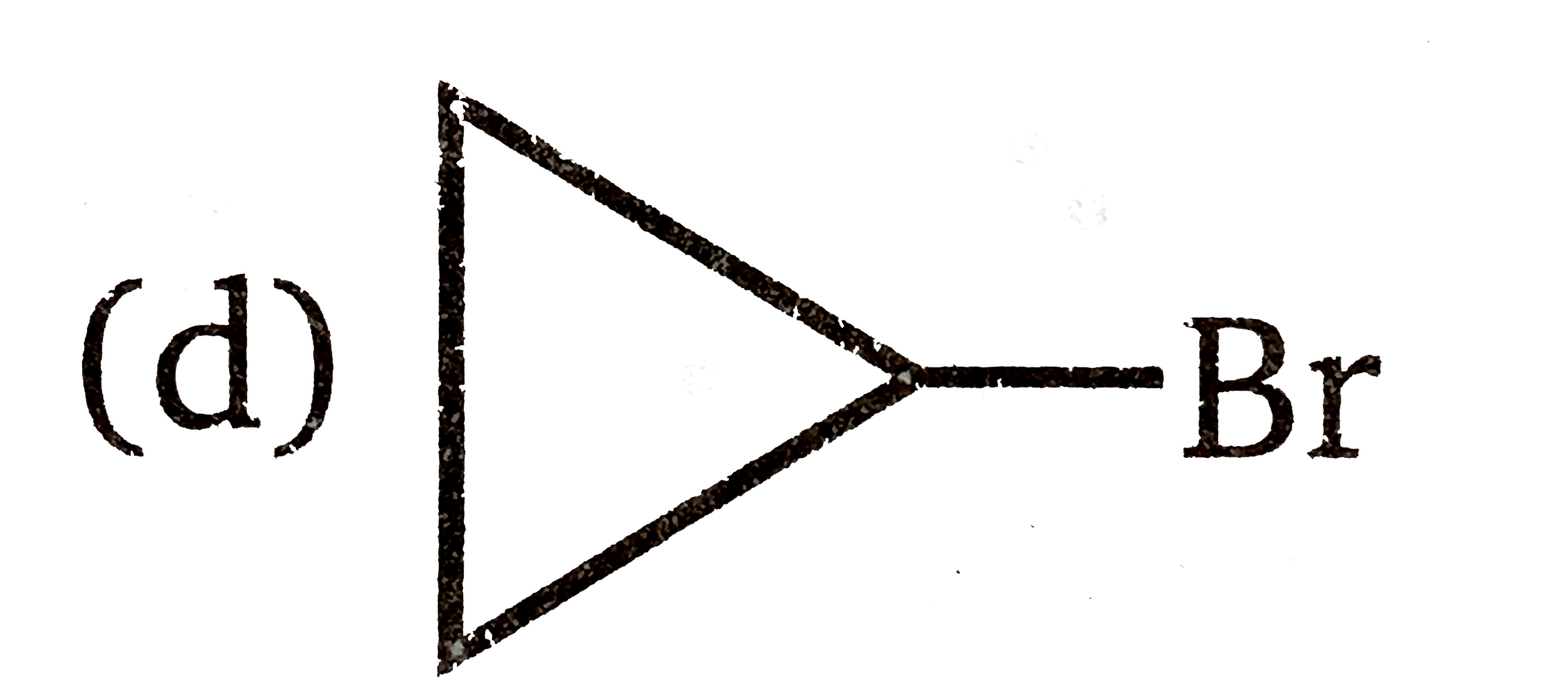Complete the following reaction : CH3−CH=CH2+HBrOrganicperoxixde−−−−−−−−−−→
To complete the reaction of propene (CH₃-CH=CH₂) with HBr in the presence of organic peroxide, we need to follow the steps outlined below:
1. Identify the Reactants:
The reactants in this reaction are propene (CH₃-CH=CH₂) and hydrogen bromide (HBr). The presence of organic peroxide is also noted.
2. Understand the Role of Organic Peroxide:
Organic peroxides affect the mechanism of the reaction. In this case, they lead to the anti-Markovnikov addition of HBr to the alkene.
3. Apply Anti-Markovnikov's Rule:
According to anti-Markovnikov's rule, when HBr adds to an alkene in the presence of peroxides, the hydrogen atom (H) will attach to the carbon atom with fewer hydrogen atoms (the less substituted carbon), and the bromine (Br) will attach to the more substituted carbon.
4. Determine the Product:
For propene (CH₃-CH=CH₂):
- The double bond is between the second and third carbon atoms.
- The first carbon (CH₃) has three hydrogen atoms, the second carbon (CH) has one hydrogen atom, and the third carbon (CH₂) has two hydrogen atoms.
- Following anti-Markovnikov's rule, the hydrogen will add to the second carbon (CH), and bromine will add to the third carbon (CH₂).
5. Write the Product:
The product of the reaction will be 1-bromopropane (CH₃-CH₂-CH₂Br), where the bromine is attached to the first carbon and the hydrogen is added to the second carbon.
Final Answer:
The complete reaction is:
CH3−CH=CH2+HBrOrganic Peroxide−−−−−−−−−−→CH3−CH2−CH2Br
This results in the formation of 1-bromopropane.
---
The reactants in this reaction are propene (CH₃-CH=CH₂) and hydrogen bromide (HBr). The presence of organic peroxide is also noted.
Organic peroxides affect the mechanism of the reaction. In this case, they lead to the anti-Markovnikov addition of HBr to the alkene.
According to anti-Markovnikov's rule, when HBr adds to an alkene in the presence of peroxides, the hydrogen atom (H) will attach to the carbon atom with fewer hydrogen atoms (the less substituted carbon), and the bromine (Br) will attach to the more substituted carbon.
For propene (CH₃-CH=CH₂):
- The double bond is between the second and third carbon atoms.
- The first carbon (CH₃) has three hydrogen atoms, the second carbon (CH) has one hydrogen atom, and the third carbon (CH₂) has two hydrogen atoms.
- Following anti-Markovnikov's rule, the hydrogen will add to the second carbon (CH), and bromine will add to the third carbon (CH₂).
The product of the reaction will be 1-bromopropane (CH₃-CH₂-CH₂Br), where the bromine is attached to the first carbon and the hydrogen is added to the second carbon.
The complete reaction is:
CH3−CH=CH2+HBrOrganic Peroxide−−−−−−−−−−→CH3−CH2−CH2Br
This results in the formation of 1-bromopropane.
Topper's Solved these Questions
- HYDROCARBONSBOOK - CBSE COMPLEMENTARY MATERIALCHAPTER - HYDROCARBONSEXERCISE - 2- MARK QUESTION
28 Videos
- HYDROCARBONSBOOK - CBSE COMPLEMENTARY MATERIALCHAPTER - HYDROCARBONSEXERCISE - 3- MARK QUESTION
17 Videos
- HYDROCARBONSBOOK - CBSE COMPLEMENTARY MATERIALCHAPTER - HYDROCARBONSEXERCISE - ONE WORD TYPE QUESTION
10 Videos
- EQUILIBRIUM BOOK - CBSE COMPLEMENTARY MATERIALCHAPTER - EQUILIBRIUM EXERCISE - UNIT TEST
6 Videos
- HYDROGENBOOK - CBSE COMPLEMENTARY MATERIALCHAPTER - HYDROGENEXERCISE - Unit Test
11 Videos
Similar Questions
Knowledge Check
The major product of the following reaction is:
CH3−CH=CH2+HBr(C6H5CO)2O2 peroxide−−−−−−−−−−−−−−−→ACH3−CH2−CH2−BrBCH2CH(Br)−CH3CBrCH2−CH=CH2D
Complete the following reactions :
CH3CH=CH2+O3Zn/H2O−−−−−→
View SolutionComplete the following chemicals equation
CH3CH2CH=CH2+HBr(peroxide)−−−−−−→
View SolutionComplete the following reactions :
CH3CH=CH2+H2Pd,Pt orNi−−−−−−→?
View Solution(a) State the IUPAC name of the following compound :

(b) Complete the following chemical equation :
CH3CH2CH=CH2+HBrPeroxide−−−−→.......
View SolutionComplete the following Reaction
CH3−CH=CH2+HBr
CCl3−CH=CH2+HBr
View SolutionComplete the following reactions :
CH3C≡CH+H2Pt−−→?H2−−→
View SolutionComplete the reaction :
CH3CH=CH2HBr−−→
View Solution
